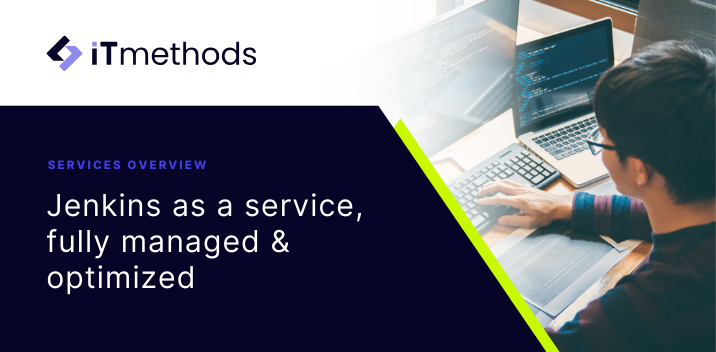
Is your IT service management (ITSM) ready to support growth?
All organizations want to achieve operational excellence with their IT. The challenge is determining the current state, where you want to be, and how to get there.
Foundry’s 2024 State of the CIO Survey revealed a few interesting trends:
- 75% of CIOs said they struggle to strike the right balance between business innovation and operational excellence.
- Top priorities include leading digital business initiatives, upgrading IT and data security to reduce risk, and strengthening IT and business collaboration.
- 63% wanted to work closer with business executives to determine business needs.
Transforming your IT processes doesn’t happen overnight. By leveraging tools like Atlassian Jira Service Management (JSM) alongside ITSM best practices, organizations can streamline service delivery, enhance collaboration between IT and business teams, and accelerate IT maturity.
How do you get there? For many organizations, it starts with completing an IT maturity assessment to identify blockers, build a roadmap, and execute a plan that enables impactful, near- and long-term change.
Learn the basics of ITSM maturity assessments, the exact stages you’ll work through, and how they can improve your ITSM readiness and maturity.
ITIL, ITSM, and identifying your maturity level
The IT Infrastructure Library (ITIL) is a set of best practices for managing IT services. Its goal is to help organizations deliver consistent, reliable IT support and services.
ITIL covers processes like incident management, problem management, change management, and more, providing a common framework for companies to adapt to their needs. Meanwhile, ITSM is the program that manages end-to-end delivery of IT services within an organization.
The ITIL Maturity Model typically measures an organization’s ITIL process capabilities on a five-point scale:
- Initial (or Ad Hoc): Processes are unstructured, inconsistent, and reactive. Success often depends on individual effort rather than well-defined procedures.
- Repeatable: Basic processes are established and may be repeated, but they are often manual and not consistently enforced.
- Defined: Processes are documented, standardized, and communicated. Teams follow a more consistent approach across the organization.
- Managed: Processes are measured and monitored. Data-driven improvements begin, and performance is regularly reviewed.
- Optimized: Continuous improvement is embedded. Processes are fine-tuned, and the organization strives for ongoing optimization and innovation.
An IT Readiness and maturity assessment helps organizations evaluate service delivery metrics, identify quick wins, and create a strategic roadmap.
Stage #1: Scoping and planning
The first stage involves scoping your current state and planning how to get to your desired state. Here, you’ll map out what processes to assess, establish what success looks like, define who’s doing what, and determine your timeline.
Tasks to complete:
- Less maintenance, more innovation – Offload toolchain management and let engineers focus on delivering features, not babysitting pipelines.
- Seamless CI/CD pipelines – Reduce the friction in software delivery with a tightly integrated toolset that scales with your needs.
- Security & compliance by design – Built-in role-based access control, audit logging, and cloud security best practices.
- Lower total cost of ownership – Pay for what you need, eliminate waste, and optimize infrastructure spending.
Key Takeaway: A clear definition of which processes and services to assess, along with documented goals, timelines, and responsible parties.
Stage #2: Data collection and maturity scoring
After establishing the current and desired state, data collection and maturity scoring come next. Here, you’ll gather all the information needed to assess current processes, including process owners and stakeholders, tools and metrics, strengths and weaknesses, and more, to evaluate each process individually.
Tasks to complete:
- Review existing documentation: Gather policies, standard operating procedures, workflow diagrams, and other relevant materials.
- Conduct interviews: Speak with process owners, service desk staff, and other stakeholders to see how processes are actually carried out.
- Assess tools and metrics: Check service management tools like ticketing systems and existing performance data, such as average resolution time to gauge your tools and metrics.
- Consolidate findings: Organize all collected information to create a foundation for scoring.
- Apply a standardized maturity scale: Use a typical model like ITIL. For example, ad hoc → repeatable → defined → managed → optimized).
- Evaluate each process: Determine whether a process is reactive (ad hoc) or follows documented steps (repeatable/defined).
- Document strengths and weaknesses: Note effective practices and areas needing improvement.
- Reference best practices: Map processes to recognized frameworks (e.g., ITIL) to check if key elements are in place.
Key Takeaway: A consolidated overview of current processes and tools, plus a maturity scorecard that highlights strengths, weaknesses, and alignment with best practices.
Stage #3: Perform a gap analysis
The combined efforts of Stages 1 and 2 should reveal gaps in your IT processes. This information will underpin your gap analysis, which compares your current and desired state. It will also identify obstacles preventing a higher maturity level and summarize your findings to enable effective prioritization.
Tasks to complete:
- Compare current vs. desired state: Identify how far each process is from its target maturity level.
- Pinpoint root causes: Determine what’s preventing higher maturity. For example, this may include limited automation, siloed departments, or inconsistent documentation.
- Prioritize issues: Decide which gaps must be addressed immediately and which can be addressed later based on impact.
- Summarize findings: Present a clear snapshot of the gaps for all stakeholders to ensure alignment.
Key Takeaway: A focused report that pinpoints the differences between current and desired maturity levels and highlights the most critical areas to address first.
Stage #4: Recommendations and roadmap
The combined efforts of Stages 1 and 2 should reveal gaps in your IT processes. This information will underpin your gap analysis, which compares your current and desired state. It will also identify obstacles preventing a higher maturity level and summarize your findings to enable effective prioritization.
Tasks to complete:
- Address process improvements: Suggest updates to workflows, documentation, approval steps, and other critical components of your processes.
- Improve tool usage: Offer ways to better configure or integrate service management tools. Identify potential tools that can be eliminated or combined.
- Enhance skills and training: Identify knowledge gaps in the team and propose relevant training.
- Tie improvements to goals: Show how each recommendation supports larger IT or business objectives.
- Sequence the improvements: Outline the order to tackle these recommendations based on urgency and impact.
- Estimate resources: Determine the time, budget, and staffing needed for each item.
- Assign responsibilities: Name who owns each improvement. For example, the process owner or ITSM lead.
- Set target dates: Include realistic timelines and milestones that align with your organization’s needs.
- Define success metrics: Decide how to measure improvement, such as fewer incidents or faster response times.
Key Takeaway: A prioritized action plan detailing specific improvements, required resources, responsible teams, and target timelines for each initiative.
Stage #5: Follow-up and review
ITSM is a constantly changing part of your business. It’s important to follow up and review progress made towards your list of recommendations. In Stage 5, you’ll measure progress, reassess maturity, and refine your broader strategy to enable continuous improvement.
Tasks to complete:
- Check progress regularly: Schedule periodic reviews to confirm that recommended actions are being carried out.
- Reassess maturity: After a set period, rescore processes to measure the impact of improvements.
- Refine strategies: Adjust the roadmap if business needs shift or new issues arise.
- Emphasize continuous improvement: Keep reviewing and updating processes to maintain progress.
Key Takeaway: Implement a regular review cycle that measures progress against defined metrics, updates the roadmap as needed, and embeds continuous improvement into everyday operations.
Need help measuring your ITSM readiness and maturity?
IT is the backbone of all the systems and processes your organization relies on to work efficiently, protect critical systems, and deliver exceptional customer service and experiences.
iTmethods helps organizations implement a successful ITSM program that accelerates growth and software delivery timelines with our managed platforms, expert-led service, and strategic consulting.
Are you looking to boost ITSM readiness and maturity? Download our Atlassian JSM datasheet to learn more about what’s included in this service or book a free consultation today and we’ll show you how to get there.









